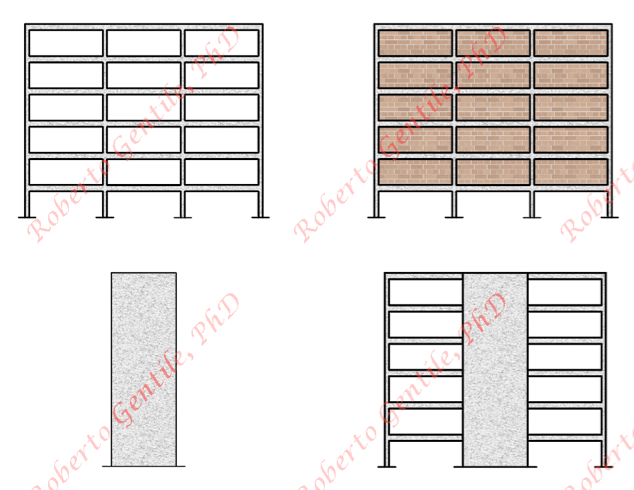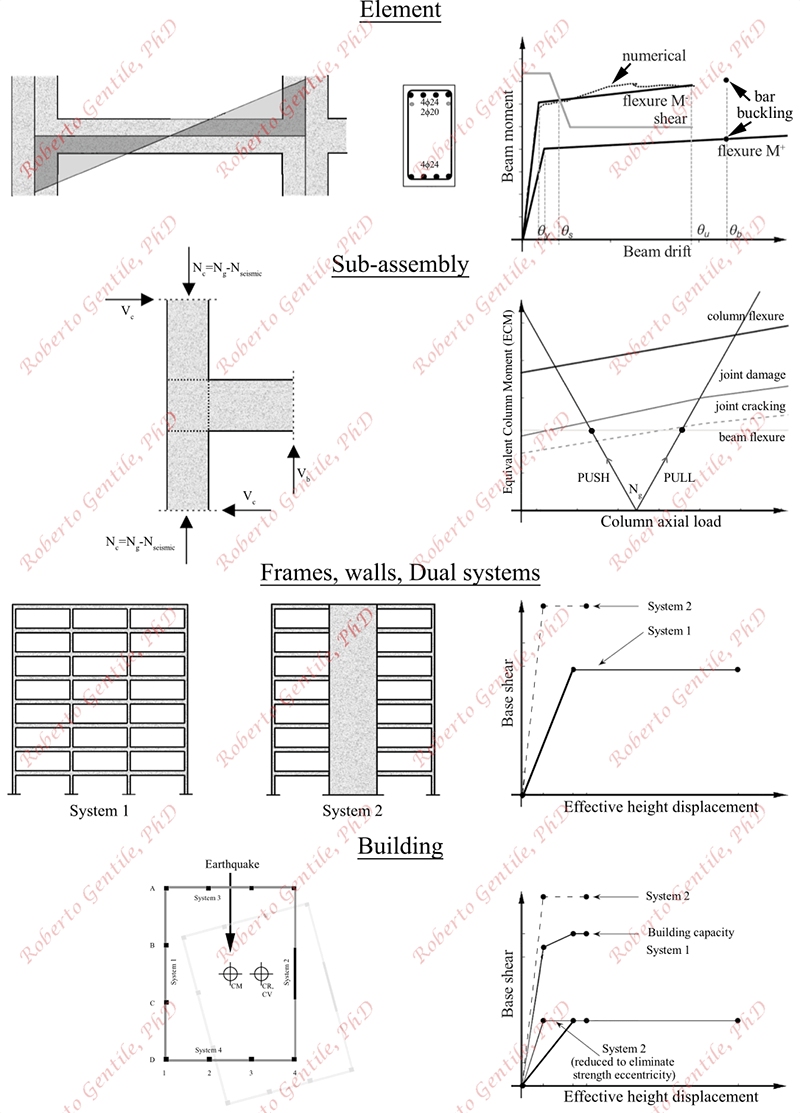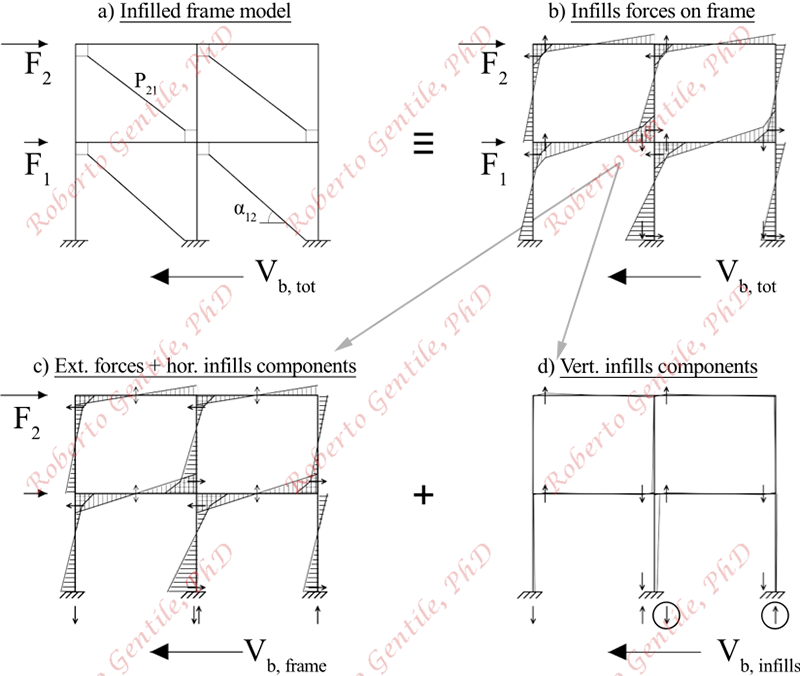
Overall
This dissertation is focused on the extension, refinement and validation of the Simple Lateral Mechanism Analysis (SLaMA) method for the seismic assessment of RC buildings. Suggested in the 2017 New Zealand guidelines for seismic assessment, \c, SLaMA is an analytical non-linear analysis technique that provides a first estimation of the global capacity curve of the primary lateral-resisting systems in RC buildings, including bare frames, cantilever walls and dual wall/frame systems. The basic idea is to progress ``from local to global", extending the local behaviour of the structural members to selected sub-schemes, and finally to the global non-linear response of the building. Inelastic torsional effects are also included. Since simplified assumptions are made, no numerical computer model is needed and hence all the calculations can be performed ``by hand" (i.e. implemented in an electronic spreadsheet).

Bare frames
The first part of this investigation is related to bare frame Lateral Resisting Systems, with the identification of potential areas of improvement for the existing SLaMA procedure and the proposal of an extended/refined one. The refined procedure for bare frames is validated through the application to a set of 40 ideal case studies and the comparison with refined numerical analyses (FEM Pushover). The results show that the refined SLaMA procedure allows to accurately identify the expected plastic mechanism of the frame, also considering the actual hierarchy of strength of its members, and to properly estimate its non-linear capacity curve with acceptable errors on the most meaningful parameters.

Infilled frames
The subsequent part of the investigation involves the development of a novel SLaMA method to evaluate the capacity curve of masonry-infilled frames systems, which represent a large portion of the building portfolio, especially in Europe. The incorporation of the contribution of the infills is completely absent in the \ci SLaMA framework. The methodology is based on a proposed mechanically-based procedure to decouple the frame and infills contributions to the overturning moment (and hence base shear) capacity for any value of the global displacement. The decoupling procedure is applicable regardless of the distribution of the infills and of the non-linear Axial load-Axial strain of the equivalent struts. It can be applied to post-process the results of Pushover or Time History analyses of different types of infilled frames (material-wise). Similarly to what done for bare frames, an extensive SLaMA vs numerical Pushover comparison, for a set of 72 ideal case studies, is used to validate the proposed SLaMA procedure.

Dual wall/frame systems
Part of the investigation is dedicated to dual wall/frame system structures, proposing a novel SLaMA procedure in which the coupled behaviour of the frame and wall(s) components is expressly considered, including the calculation of the exchanged forces and the concentrated moment couples due to the possible presence of link beams. By using the new SLaMA procedure it is possible to capture the non-linear behaviour of the dual system with extreme accuracy, as demonstrated with an extensive SLaMA vs numerical Pushover parametric analysis comprising 24 ideal case studies.

Real 1970s' case study
The last step of the work is the seismic assessment of a real case study building, severely damage in the Christchurch (New Zealand) sequence of earthquakes in 2010-2011. Different analysis techniques are used to independently derive the ``seismic score" of the building (capacity over demand), including: Linear Static, Linear Dynamic, Non-Linear Static (numerical Pushover and SLaMA) and Non-Linear Dynamic analyses. Firstly, this demonstrates the reliability of the SLaMA method in assessing real, complex cases by means of a cross-validation. Moreover, and perhaps more importantly, it is deemed that this comparative study demonstrates how the insights gained by using SLaMA can be used to calibrate important parameters needed when adopting other analysis techniques, or interpreting their results. Additional investigations might help in fine-tuning some of its steps but, overall, it is deemed that SLaMA constitutes a robust analysis technique that allows the assessor to really understand the behaviour of an RC building only using hand calculations, possibly implemented in a simple spreadsheet.






